Longtermers: Tech Editor Michelle Arthurs-Brennan’s Specialized Amira Elite
A reminder of race season's passed, the 2012 frame - basically a Tarmac SL4 - is still a much loved companion


My 2012 Specialized Amira Elite represents much more to me than the sum total of a carbon frame and a decade’s worth of replacement components. Purchasing this bike marked a grudging acceptance that my body was not designed for triathlons; the intoxicating dawn of an assault on the British road racing scene, and a first - rather organic - foray into bike testing.
I bought the bike on the Cycle to Work scheme long before I took up residence at Cycling Weekly. I already owned a Specialized Dolce (my first road bike) and I was determined - for no reason other than ‘it would seem boring’ - that my second bike would not bear the name of the same marque.
I test rode three bikes, each in two sizes - much to the irritation of the bike shop’s workshop manager I’m sure, but I’ve always liked to be thorough. Moving from an aluminium frame to carbon, the plushness felt strangely uninspiring. Until I took a spin on the Amira. I hadn’t, at the time, inhaled the bike tester’s dictionary, so thankfully I didn’t possess the language to roll out the cliches: the balance of stiffness, compliance and low weight blew me away - but seriously, it did.
Now, a decade older and accustomed to disc brakes and 28mm tyres, I wouldn’t mind if the Amira carried a few more lavish comforts - but there’s still something magical about the round tubes and agile ride of what is, basically, the Tarmac SL4.
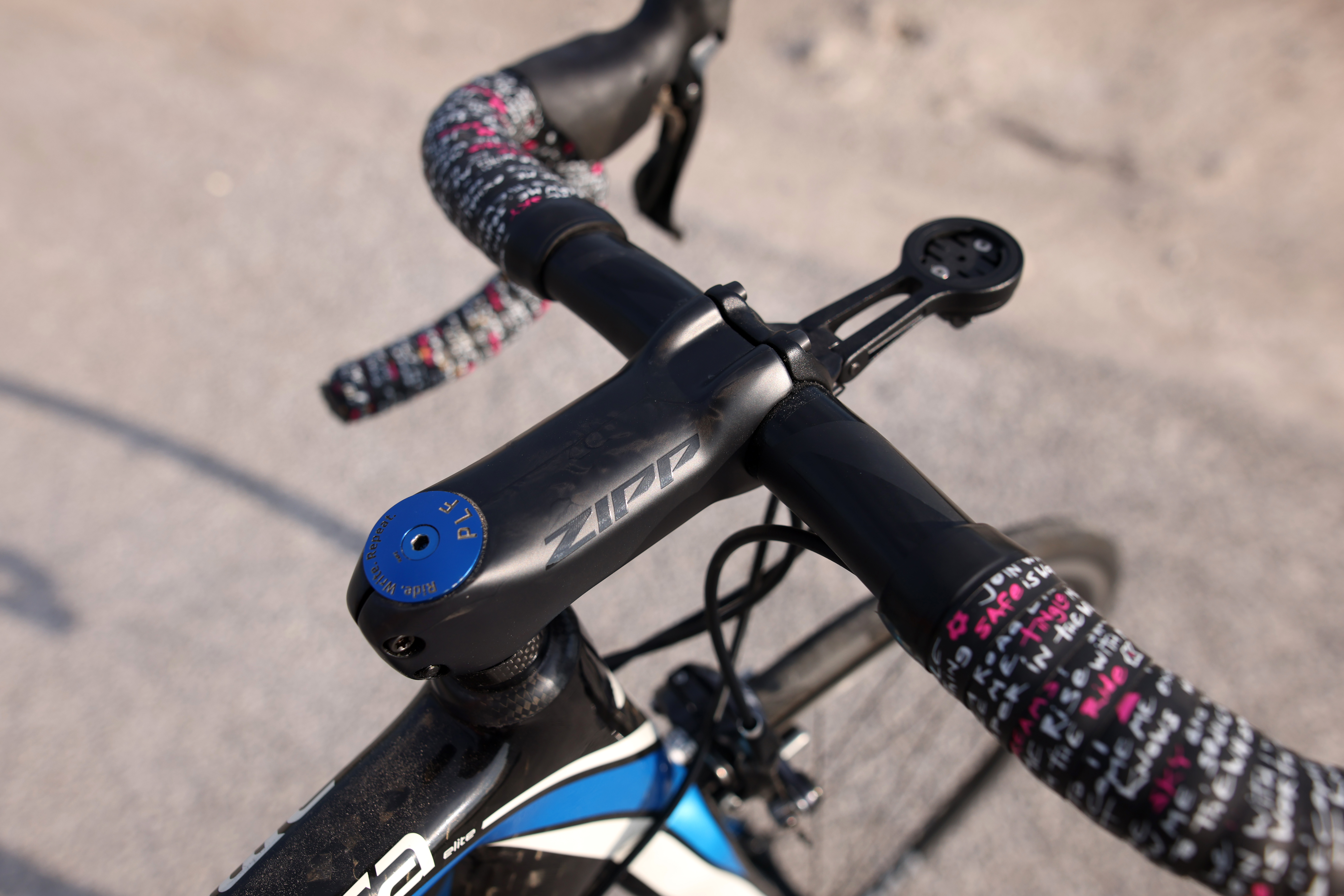
It's not meant to be upside down, I just didn't remember to adjust it before our photographer arrived...
At this point, the only original components left on the bike are the Shimano 105 10-speed shifters, matching brakes, and - of course - the frame. My favourite component, bizarrely, has to be the top cap. It was a present from my husband, and carries the letters ‘PLF’. We can’t print exactly what that stands for in this family magazine - but it’s a bit like ‘pedal like fury’.
Rim brake shortcomings
I raced the Amira from that first number-pinning year, up until a replacement arrived in 2018; the Amira’s last competitive outing was the 2018 Cicle Classic. I seem to remember discovering mid-race that the bottom bracket bearings badly needed replacing, but less said of that the better. Suffice to say that in new bike purchases I would preference a threaded bottom bracket.

The initial gearing set-up, as per many women’s branded bikes, was a 50/34 compact chainset. At some point during our time together I swapped this for a 52/36, and this has remained my go-to ever since. I tended to opt for a 11-25 cassette during the race season, swapping on a 11-28 during the winter months. When we moved to a valley home at the base of a few tasty 20% climbs, the 11-28 became a more regular fixture - but I did achieve my fastest time up Caterham’s White Hill Lane on the closer spacing.
Get The Leadout Newsletter
The latest race content, interviews, features, reviews and expert buying guides, direct to your inbox!
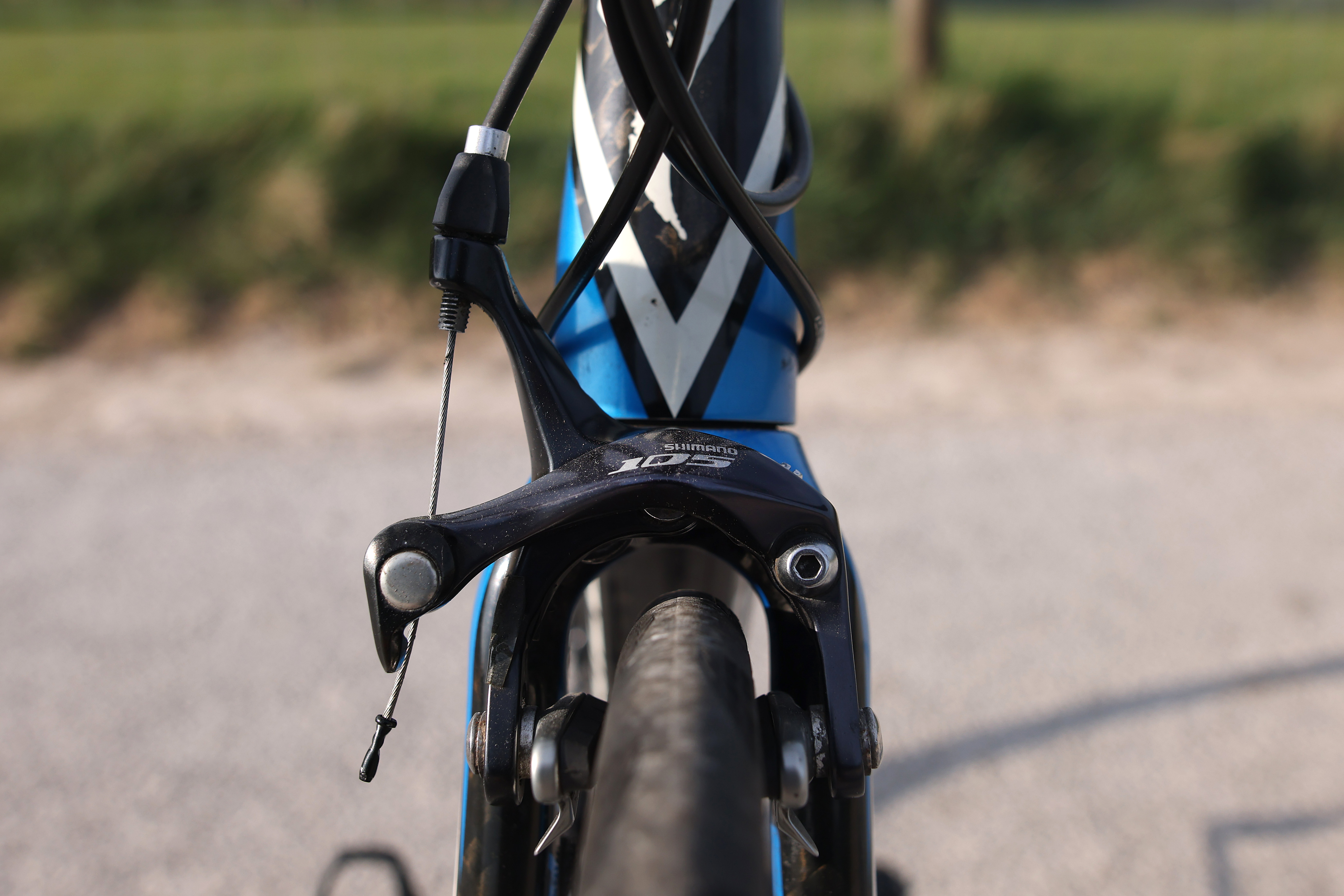
The bike is, of course, a rim-brake model. If you were hoping I was going to retro-grouch it up and proclaim these the gold standard, you'd be mistaken. The rim brakes are pretty much the only thing preventing me from allowing the Amira to become my everyday companion. I realise that there are still some non-converts out there, but for me, disc brakes are now where it’s at. I think the moment I rolled directly over a team mate’s rib cage during a wet race, with my fingers to the bar in an attempt to stop, sealed it. I’ll agree, disc brakes carry imperfections, but I’ll take reliable stopping in a downpour any day.
Relic reminder to race season’s passed
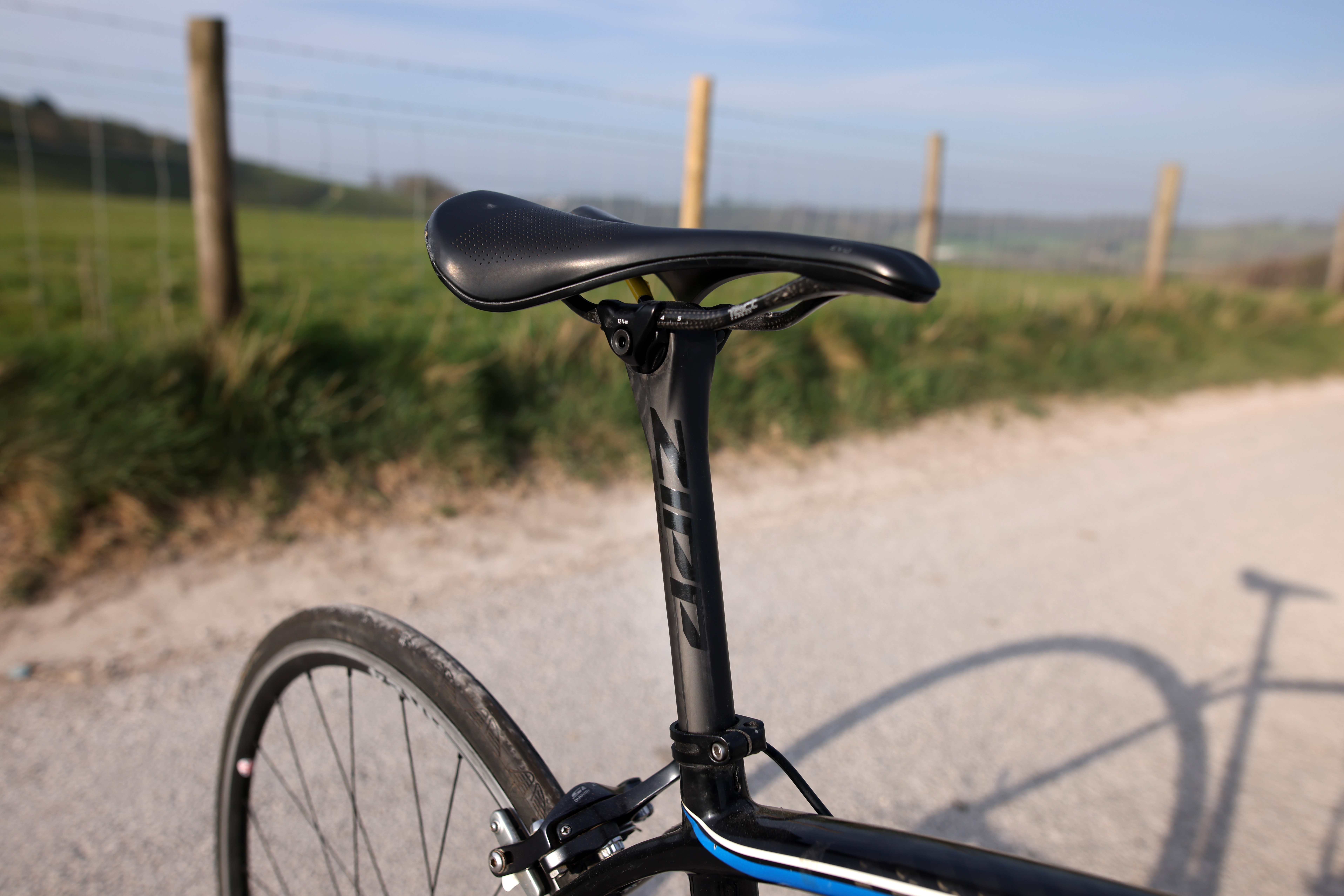
My Riding
My cycling volume, and speed, have taken somewhat of a tumble in recent months, owing to my other - perhaps more important task - of growing an additional human being. My day-to-day bike has the stem flipped, and if I take the Amira out over summer, I’ll evidently need to do the same. Or, I might save her for the summer months ‘After Birth’, should I be so lucky. Living in the shadow of the South Downs, following a move just under a year ago, my local roads are still new enough that they fill me with absolute joy - and whilst I won’t be pushing for any PBs, I can’t wait to feel the sensation of a little bit of speed once I’m able to get down on the drops and let my heart rate soar once again.
So, what job does the Amira fulfil? Well, she was meant to be (please don’t laugh), a commuter. Then I uncovered a complete Zipp SL finishing kit in our office workshop. They, along with the Ultegra chainset, elevate the overall aesthetic to a status clearly too lofty for commuting duties, turning the bike into an obvious theft target. So for now, she’s - I suppose - an occasional summer companion, or, an underused relic and a reminder of my racing years. Being currently in my third trimester of pregnancy, this is the first season in the last decade where I won’t be pinning on a number.
The wheels, of course, get swapped for races for a deeper, carbon pair when the Amira is ridden in anger. The Cero AR24s were a value orientated purchase some time around 2017. At the time, their being tubeless ready was a ‘nice to have’ but not something I took advantage of. Now, I’m largely in agreement that tubeless is the way to go, provided you can get decent sealant (read my ranty online story for further views on this!). Currently, they’re wearing a rather aged set of Conti GP4000 tyres, but at next swap these will be replaced by GP5000s or some Schwalbe Pro One rubber.
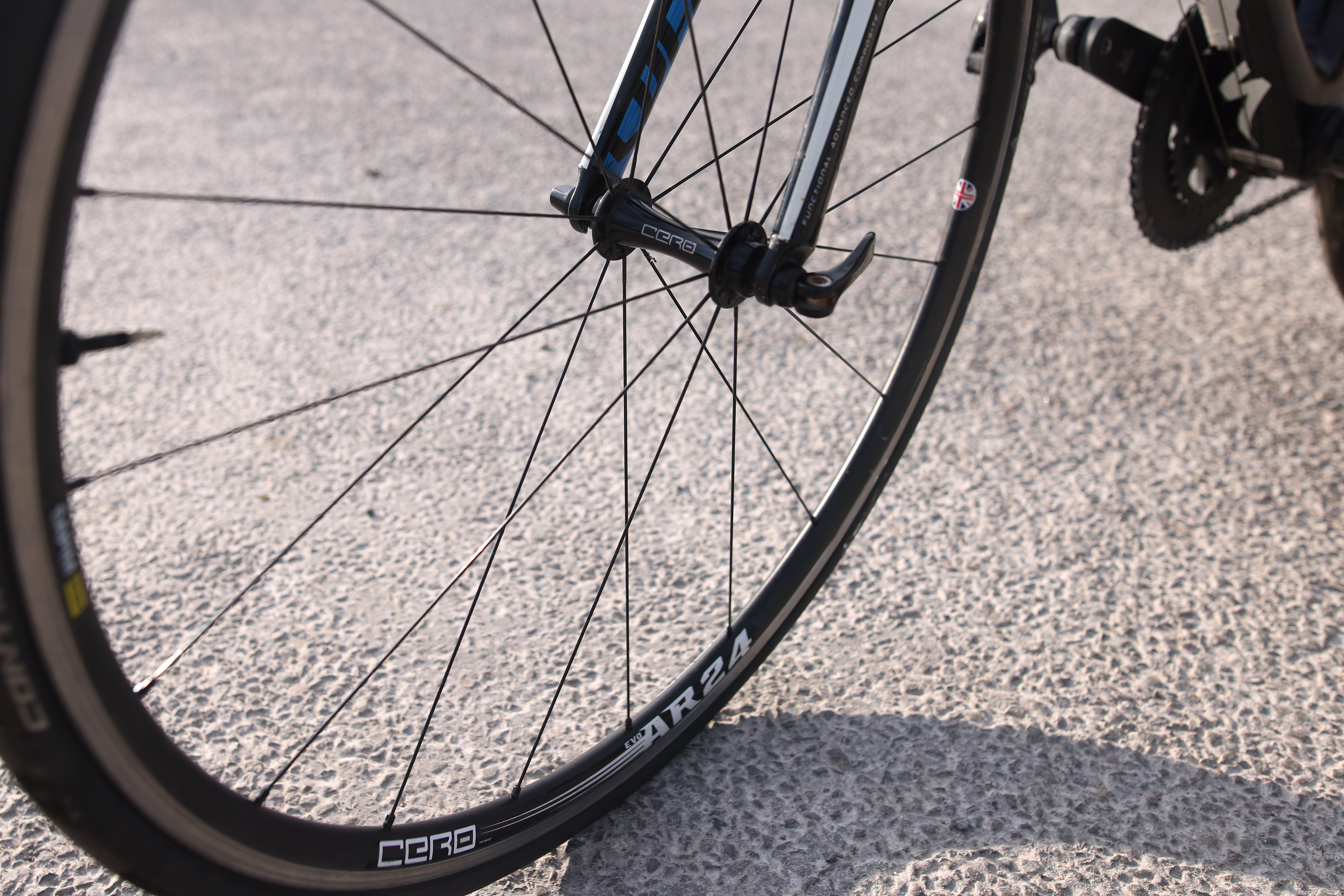
The pedals are the Favero Assioma Duo-Shi. Since a large part of my job involves regularly swapping onto different bikes, I am an absolute convert to power meter pedals. These allow me to know that, regardless of which bike I’m on, my power readings are consistent - albeit, at 28 weeks pregnant, I’m not taking a lot of notice of the numbers right now. I’ve tested models from Garmin, Powertap and Favero, and the Favero Assioma is the version I recommend to all of my friends.
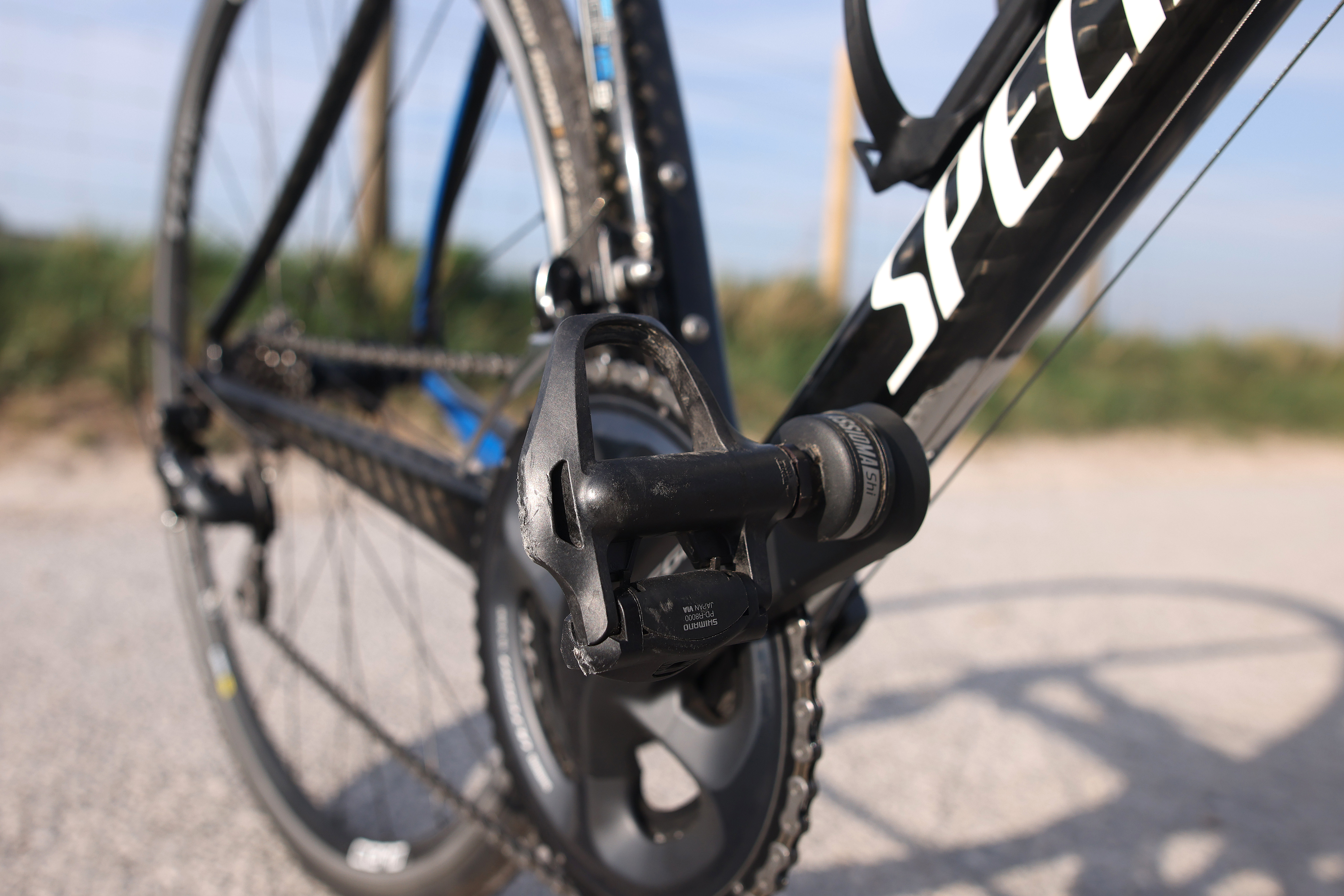
The Specialized Romin Evo saddle perched atop the seatpost is a favourite in a long line of test models, adopted after the brand discontinued the women’s Oura which shared a similar shape. Unlike the more fashionable stubby short-nosed options, the length of the Romin Evo caters for a more mobile rider - rather than locking me into position, this saddle offers ample places to sit, whether on the rivet, leaning back to climb, or relaxing over longer miles.
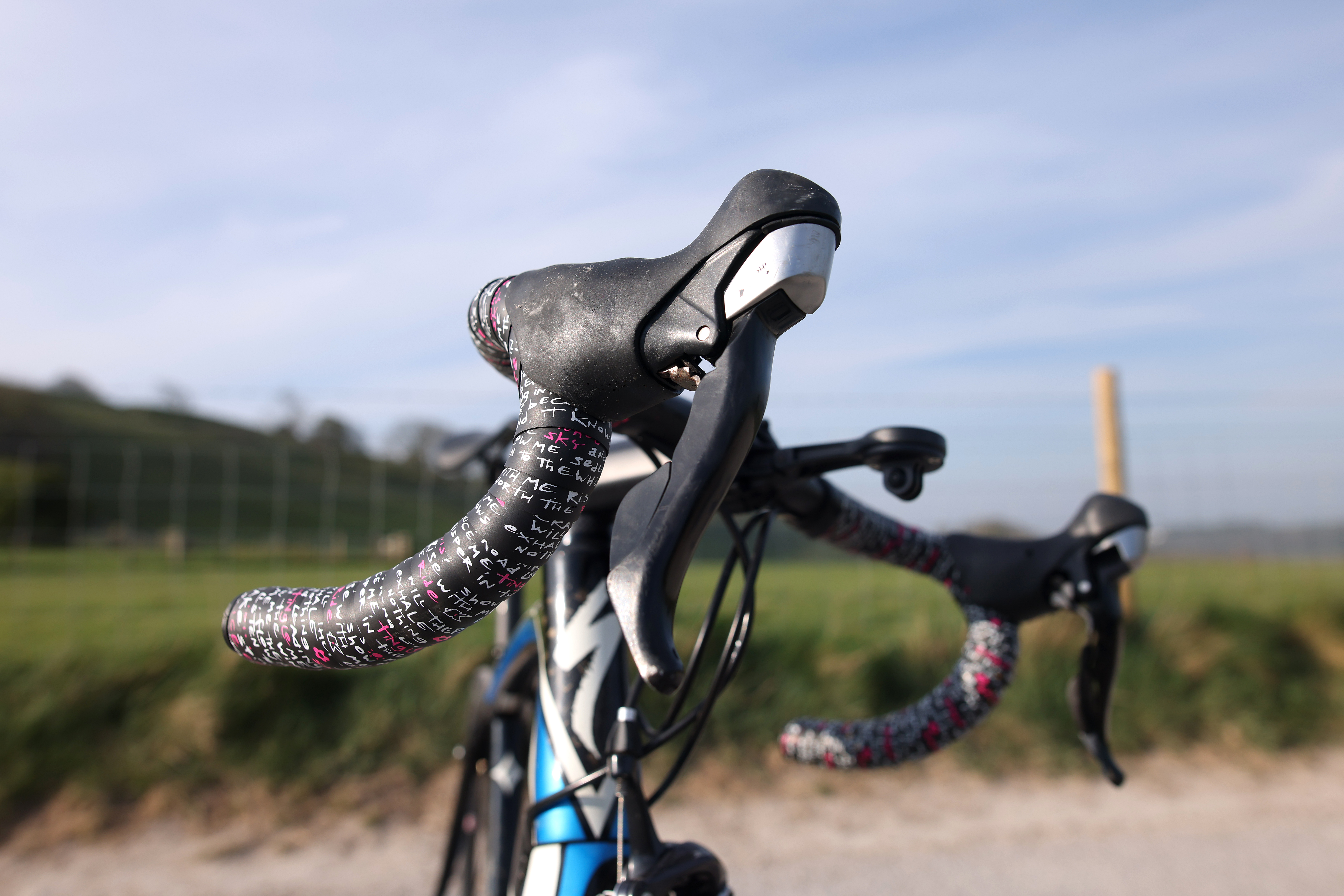
The bar tape is - well - it clashes, badly, doesn’t it?! It’s Kinesis’s Anti-Slip Handlebar Tape, Signature Series No.1, designed by the legendary cartoonist of Mint Sauce, Jo Burt. In all honesty, it’s what we had in the office at time of fitting. My anticipation was that the pink, white and black would be far too noisy alongside the blue, black and white frame - and yet, somehow, I like it. So I’ve left it - you can disagree if you like and one day I’ll likely swap on something blue from Lizard Skins. But for now, it’s staying. There’s something rather fitting about this addition to my cobbled together frankenbike which just feels ‘right’, exactly like the Amira did - on that first ride - over a decade ago.
Specification
- Specialized Amira Elite 2012 frame
- Shimano Ultegra chainset, 52-36, 165mm cranks
- Shimano 105 rim brakes
- Shimano 105 shifters
- 11-25 cassette
- Cero AR24 wheels, tubeless ready
- GP4000 tyres (soon to be replaced)
- Specialized Romin Evo saddle
- Zipp SL seatpost/bars/stem
- Kinesis’ Anti-Slip Handlebar Tape, Signature Series No.1 bar tape

Thank you for reading 20 articles this month* Join now for unlimited access
Enjoy your first month for just £1 / $1 / €1
*Read 5 free articles per month without a subscription

Join now for unlimited access
Try first month for just £1 / $1 / €1
Michelle Arthurs-Brennan the Editor of Cycling Weekly website. An NCTJ qualified traditional journalist by trade, Michelle began her career working for local newspapers. She's worked within the cycling industry since 2012, and joined the Cycling Weekly team in 2017, having previously been Editor at Total Women's Cycling. Prior to welcoming her first daughter in 2022, Michelle raced on the road, track, and in time trials, and still rides as much as she can - albeit a fair proportion indoors, for now.
Michelle is on maternity leave from April 2025 until spring 2026.
-
 Save £42 on the same tyres that Mathieu Van de Poel won Paris-Roubaix on, this Easter weekend
Save £42 on the same tyres that Mathieu Van de Poel won Paris-Roubaix on, this Easter weekendDeals Its rare that Pirelli P-Zero Race TLR RS can be found on sale, and certainly not with a whopping 25% discount, grab a pair this weekend before they go...
By Matt Ischt-Barnard
-
 "Like a second skin” - the WYN Republic CdA triathlon suit reviewed
"Like a second skin” - the WYN Republic CdA triathlon suit reviewed$700 is a substantial investment in a Tri Suit, and it is, but you’ll definitely feel fast in it
By Kristin Jenny